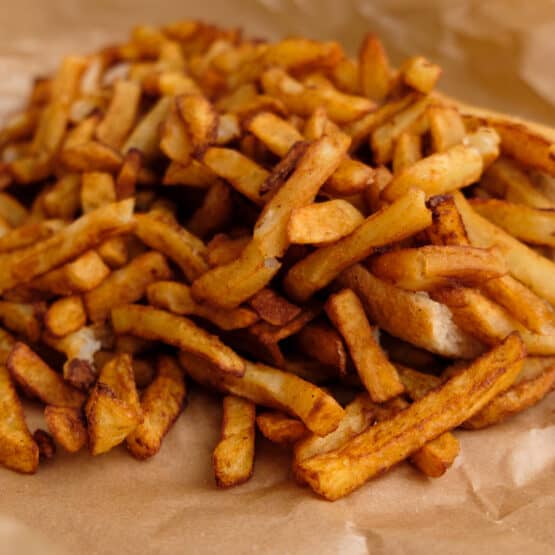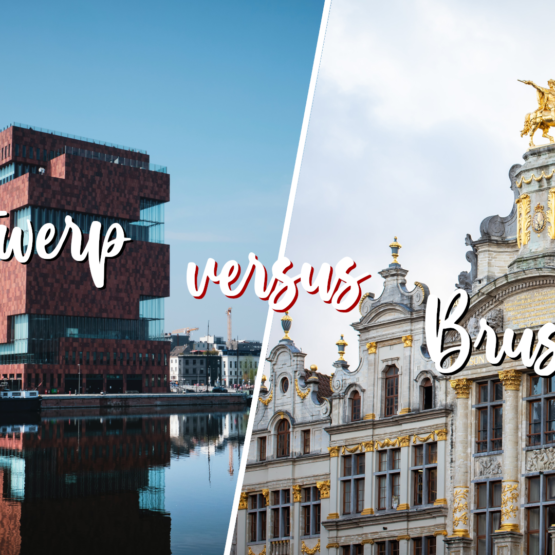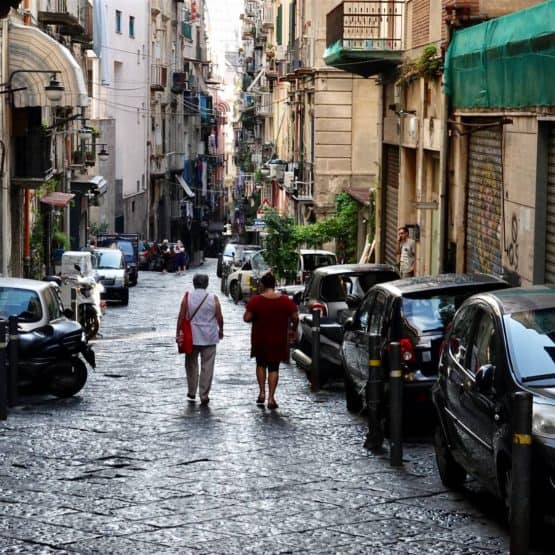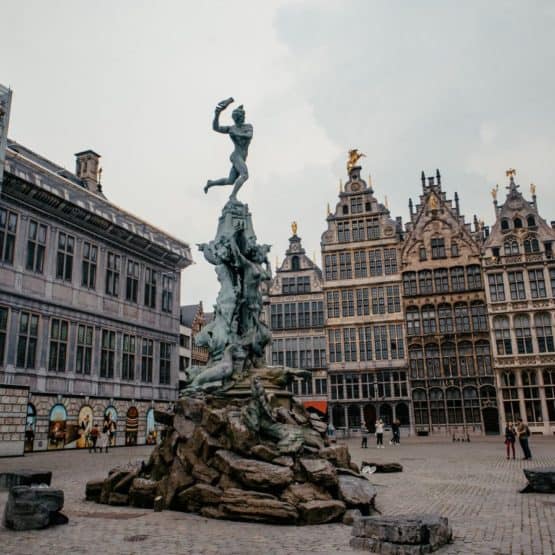While Ireland is by no means a cheap country to visit, it is possible to visit Dublin on a shoestring budget. The Irish capital was the first destination I ever visited solo, and this comprehensive solo travel guide will give you the best Dublin travel tips to make your trip there the adventure of a lifetime.
A comprehensive Dublin solo travel guide
If you’re planning your first solo trip and you’re considering Dublin as a destination, you’ve already made a great call. I know how you feel and I know how scary it can be. But I strongly believe that travelling alone can change your life.
My first solo trip was in Dublin, and I made a lot of mistakes while I was there. But still, I believe these mistakes were more due to my lack of experience than to the destination’s welcoming.
Because solo travel in Ireland is amazing.
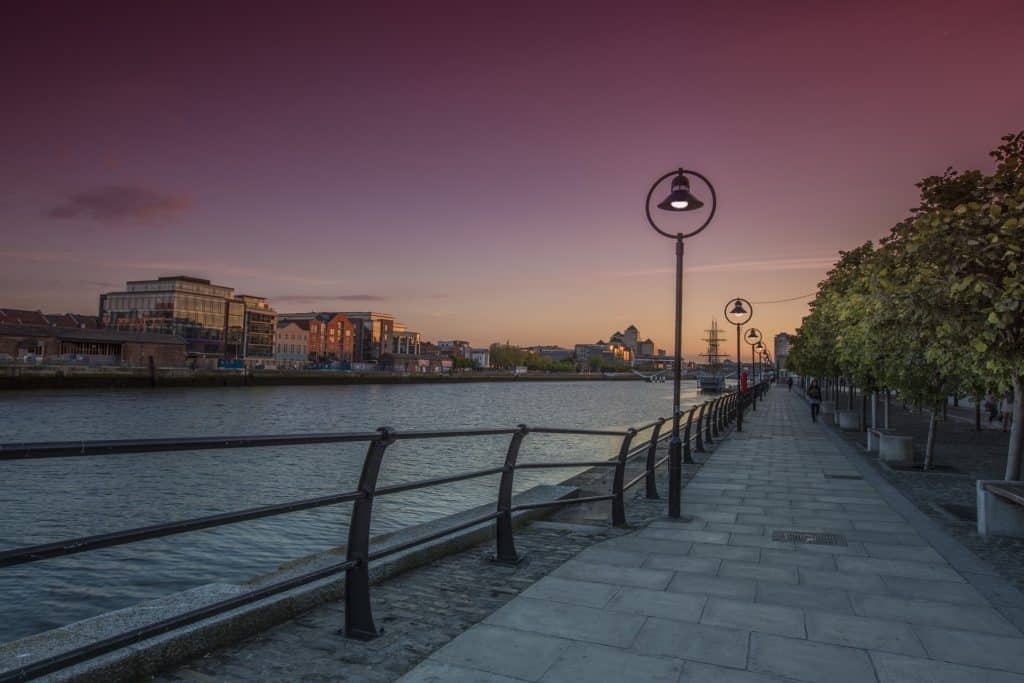
These Dublin travel tips are here to show you why that is and to make sure that you don’t make the same mistakes I did.
Check out the embedded map below for everything that is mentioned in this blog post (or click here if the map doesn’t load correctly):
This Dublin travel guide for solo travellers will consist of the following sections (click through if you’re only interested in a specific topic!):
- Getting around
- Pubs and bars in Dublin
- Dublin restaurants
- Where to stay in Dublin
- What to do in Dublin
- When to visit Dublin
- Miscellaneous travel tips
Getting around Dublin
How to get from Dublin Airport to the city
Dublin Airport is located about 10 km north of the city centre. When you arrive at the airport, you have four main options to get you to the city itself:
- Airlink / 747 (express public bus)
- Aircoach (express private coach)
- Dublin Bus (public bus)
- Taxi
Airlink / 747 (express public bus)
Airlink, also known by its route number (747), is an express public bus service operated by Dublin Bus. It’s one of the fastest ways to get from Dublin airport to the city. Buses between the airport and the city centre run up to every 10 minutes. Airlink has main stops at Busaras, O’Connell Street and Heuston.
The fare is covered by the Leap Visitor Card (see below). But if you don’t have that card, a return fare will set you back €10. You can purchase Airlink tickets online, at information desks at the airport, at vending machines outside the bus terminal or in cash, on board the bus.
Aircoach (express private coach)
Aircoach (bus line 700) is an express private coach service that runs between Dublin airport and the city centre. This service tends to be a bit faster than Airlink, but it’s also more expensive. Buses between the airport and the city run every 15 minutes.
Aircoach fares are not covered by the Leap Visitor Card. Tickets for a return trip cost €12 and can be purchased online, at the Aircoach departure desk at Dublin Airport or in cash, on board the bus.
Check the official website for Aircoach timetables.
Dublin Bus (public bus)
This is the cheapest way to get from the airport to the city centre, as a single fare will only cost you €3,30. There are two high-frequency buses (running every 10-30 minutes) from the airport to the city: bus 41 bound for Lower Abbey Street and bus 16 bound for Ballinteer.
The Leap Visitor Card covers this bus, but if you have one, you might as well opt for the Airlink, which has fewer stops along the way. But keep in mind: if you’re taking the Dublin Bus and you’re paying in cash, make sure you have the exact coins! The bus driver is unable to give you any change.
Taxi
If you don’t feel comfortable on a public bus, there’s also this option. Taking a private, metered taxi from Dublin airport to the city costs about €25-30. I wouldn’t recommend this if you’re on a budget, but if you feel like splurging, be my guest. Taxis queue up just outside Terminal 1, Arrivals level.
These boots were made for walkin’
Although Dublin is the biggest and most populous city of Ireland, it’s still very walkable. Especially if you’re travelling alone and you don’t really have anything else to do, you might as well take a walk.

If you don’t have much time in Dublin – when you’re only there for a layover, for example – it’s a good idea to take a walking tour to explore the city’s main sights. Take a self-guided walking tour of Dublin with this article as a guide, or take a free (tip-based) guided walking tour.
Life is better on a bike
Looking for something more active than walking around the city? Why not rent a bicycle?

The most popular rental bike scheme in Dublin is Dublinbikes. There are 115 docking stations spread around the city, with a maximum capacity of 15 bikes each. Every docking station also comes with a payment terminal, where you can purchase a 3 day ticket.
In order to use the system, you’ll need to take out a subscription. Don’t worry, it sounds more serious than it actually is: a 3-day subscription only costs €5. The first 30 minutes of each journey are free, and a service charge applies after that.
Check Dublinbikes’ official website for more information.
Public transport
But of course, not everyone wants to walk or feels comfortable walking alone in a foreign city. For those people, there are three main options for public transport in Dublin.
- The vast Dublin Bus network will get you to most of the main attractions in Dublin.
- The trams in Dublin are called Luas, which translates to ‘speed’ in Irish. There are two tram lines across the city: the red line and the green line.
- The DART (Dublin Area Rapid Transport) can be used to reach more off-beat attractions and places around Dublin, like Howth and Malahide.
As for payment for the buses, trams and DART in Dublin, there are also three options:
- One of the best Dublin travel tips I can give you is to buy a Leap Visitor Card. This card gives you unlimited acces to Airlink, Dublin Bus, Go-Ahead Ireland routes in Dublin, Luas, DART and Commuter Rail. This is the most efficient option for public transport as a visitor. There are options for one day, three days or seven days.
- Buy a TFI Leap Card and top up in €5 increments in local shops. This is a useful option if you’re not sure how often you’ll use public transport.
- Pay your ticket in cash at a ticketing machine (Luas & DART stops) or by putting coins into a slot by the bus driver.
Where to drink in Dublin
It’s true: the Irish are infamous among Europeans for their drinking culture. Many drinks, like stout (e.g. Guinness) and whiskey (e.g. Jameson) are produced in Ireland, and the Irish are notoriously good at enjoying a drink every now and then.
For that reason, here’s a list of the top pubs in Dublin to have a drink at as a solo traveller. Because what would a list of Dublin travel tips be without drinking recommendations?
The Temple Bar

Although it’s often been called a tourist trap, I truly believe that the OG Temple Bar is an iconic place to visit when you’re travelling to Dublin. It has a strong reputation for its great atmosphere and live music. And, more importantly, you won’t have any problems striking up a conversation with a stranger as a solo traveller. Just keep an eye on your tab, since staff tend to increase the price of your drinks over time.
The Brazen Head
Founded in the 12th century, The Brazen Head has a reputation as Ireland’s oldest pub. Live music is played here regularly, so check the website to find out if anyone’s playing when you’re there. Beside their extensive collection of Irish whiskies, gins and vodkas, traditional Irish dishes like beef & Guinness stew and smoked cod are also served at the Brazen Head.
Token
As they describe themselves, Token is a restaurant, bar, retro arcade, pinball parlour and event space – all in one. Obvious highlights here are the retro game machines and pinball lounge in the basement. You can come here for a drink and some games without reservations, but just don’t forget to try some food (check out the extensive vegan and gluten-free options!).
Long Hall
Not to be confused with the Long Hall at Trinity College, the Long Hall pub has been one of Dublin’s best loved pubs since 1766. Often described as ‘an actual traditional Irish pub’, this place is definitely worth some time to enjoy a cold pint of Guinness.
P.Macs
P.Macs (also P’Macs and P.Mac’s) is one of Dublin’s newest pubs, but that doesn’t take away from its appeal. Some keywords here: friendly staff, soft rock, craft beers and candlelit tables. Need I say more?
Bernard Shaw
The Bernard Shaw is more than just another bar – it’s an art space, pizza bus, beer gardens, event space and so much more. Whenever you’re in Dublin, something is on at Bernard Shaw. Not to mention the drinks are cheap and the atmosphere is incredibly vibrant and hip.
Where to eat in Dublin

Of course, a big part of travelling is finding places to eat. Here’s an overview of the best places to eat in Dublin, sorted by category.
Note: all of these suggestions are great for solo travellers, and they won’t dent your food budget too much.
- Breakfast places in Dublin: Tang Cafe, Brother Hubbard, Keoghs Cafe, Laine, My Love, The Fumbally
- Lunch restaurants in Dublin: Oxmantown, El Grito, Boojum, Beanhive
- Cake and coffee in Dublin: Dwarf Jar Coffee, The Bald Barista, Stage Door Café, Legit Coffee Co
- Dinner restaurants in Dublin: The Ramen Bar, Cirillo’s, 777, Searsons Bar
Where to stay in Dublin
Here are a few tips on where to stay in Dublin as a solo traveller.
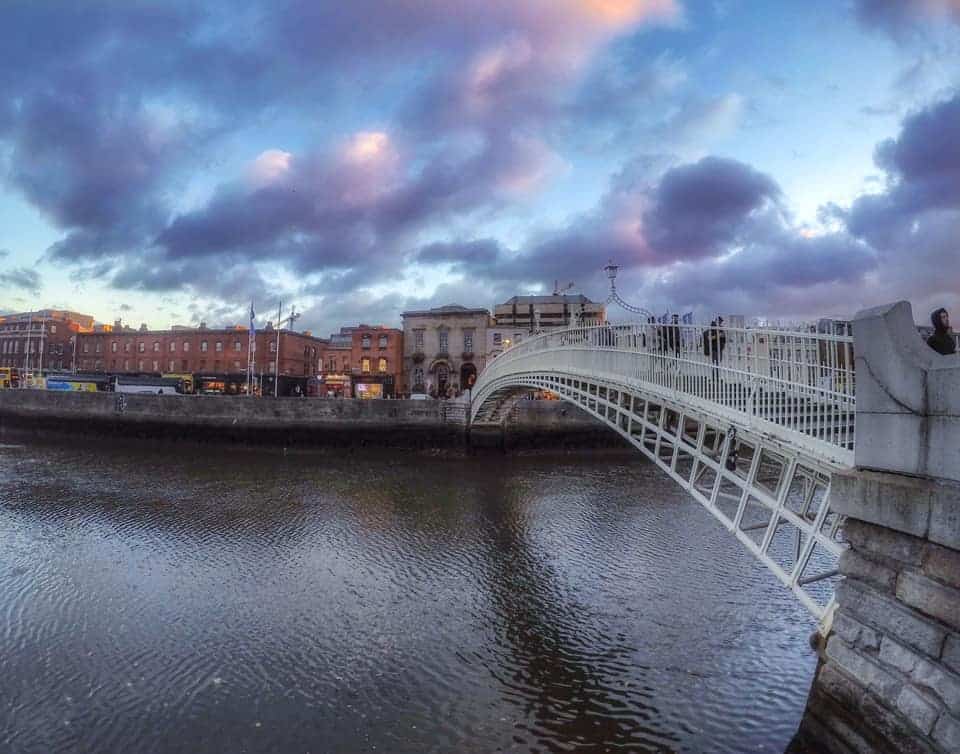
Don’t stay in Temple Bar
One of my most important Dublin travel tips: don’t stay in Temple Bar.
While many online articles and blog posts will try to convince you that Temple Bar is a great neighbourhood to stay, it’s not true. Especially not for solo travellers. And while these neighbourhoods will likely stay popular among tourists, you can be smarter than that.
For starters, staying in a neighbourhood that is literally the city centre will be expensive. You’ll be paying more than what you’d pay in a neighbourhood that was located slightly outside the city centre.
Secondly, good luck trying to fall asleep to the sound of drunk twenty-somethings and smashing glasses.
Stay just outside the city centre
If you want to stay in a central location without paying too much, look for places around the canals (Grand Canal to the south, Royal Canal to the north).
This way, you’ll still be at a walkable distance to the centre, but you won’t have any of the drawbacks – like the high prices and the noise.
Hostels in Dublin for solo travellers
And, of course, hostels are still a very popular accommodation option for budget solo travellers.
Here’s an overview of some of the best Dublin hostels, keeping in mind the fact that you’re travelling alone and that you’re on a budget.
- Generator Hostel (Check prices)
- Isaacs Hostel (Check prices)
- Abbey Court (Check prices)
- Avalon House (Check prices)
- The Times Hostel – Camden Place (Check prices)
- Jacobs Inn (Check prices)
Airbnb for solo travellers in Dublin
Although Airbnb might not be the best option for solo travellers – especially not in Dublin, since the tax authorities have been taking note of addresses – you might still be lucky and strike a bargain.
New to Airbnb? Sign up here for up to €30 off your first booking!
It’s definitely still worth checking out the website. Take a look at the following neighbourhoods. They’re a little further outside the centre, but they’re still easy walking distances.
- Phibsborough
- Ranelagh
- Donnybrook
- Ballsbridge
Dublin things to do as a solo traveller on a budget
Arguably the most significant Dublin travel tips I could give you are these: how to fill your days in the Irish capital as a shoe string solo traveller.
Libraries, tours and museums in Dublin
Here’s an overview of the best museums and tours in Dublin to visit as a solo traveller:

- National Museum of Ireland – Archaeology: learn about iconic artefacts from Ireland’s fascinating history, the story of Irish Vikings and visit the Ancient Egypt exhibition in this free museum.
- National Museum of Ireland – Natural History: this free museum, also known as the Dead Zoo among Dubliners, shows you the wonders of taxidermy, but in the best way possible.
- The Book of Kells Exhibition: located in the Long Room at Trinity College, this is one of Dublin’s most popular attractions. And among the dusty bookshelves in the library, you’ll find the world’s most famous medieval manuscript. (buy tickets online)
- Chester Beatty Library: described by Lonely Planet as one of the best museum in Europe, this free library focuses on understanding world cultures through manuscripts and rare books.
- Kilmainham Gaol Museum: this museum shows you what it was like to live behind bars in Ireland in the 19th-20th century and it’s definitely worth the €8 (€4 for students) entry fee. (buy tickets online)
- Guinness Storehouse tour: the tour of the Guinness breweries will reward you with the fascinating history of Ireland’s most iconic stout, a free pint and a 360° view over Dublin at the end of the tour. (buy tickets online)
Don’t forget to check the official websites to make sure the museum is open when you want to visit, since many of them are closed on Monday.
Free things to do in Dublin
But the museums I mentioned above are not the only free things to do in Dublin. There are some other free activities in Dublin worth checking out:
- Get lost. Wander around Dublin’s little streets and see where the wind takes you. Some great starting points: Ha’penny Bridge, George’s Street Arcade, Fade Street & South William Street
- Free walking tours. Dublin Free Walking Tour offers two daily guided tours to help you discover the best of the hidden city.
- Trinity College. Although there are student-led walking tours available, it won’t cost you anything to walk around the campus grounds on your own.
- Phoenix Park. Walking around one of Europe’s biggest public parks in a major city is free and the perfect scenery for some deer chasing.
Where to relax in and around Dublin

Because a city trip to a place like Dublin can feel quite overwhelming at times, you might need some time to take a breath and unwind. These places are perfect for that:
- St. Stephen’s Green (fabulous but busy)
- Iveagh Gardens (centrally located but small)
- Dollymount Strand (combine with a day trip to Howth)
- Sandymount Strand (quiet and accessible)
- Killiney Beach (for a day trip to Killiney)
When to visit Dublin
Don’t visit Dublin around Christmas. Chances are that stores and attractions will be closed on Christmas Day, Boxing Day (26 December), New Year’s Eve and New Year’s Day.
For the best weather, you’ll want to be in Dublin anywhere between May and September, with July and August as the best – but also the most expensive – months.
Dublin travel tips
Now that you know where to stay, where to eat, where to drink, what to do and when to visit Dublin, it’s time for some miscellaneous travel tips about Dublin to make your next adventure that much more unforgettable.
Bring a reusable tote bag. If you intend to do any shopping at all, make sure you have a reusable bag with you. There is a plastic bag levy in Dublin and most retailers only provide heavy-duty bags, which cost a lot.
Let your pint of Guinness settle. If there’s one way that Dubliners pick up outsiders, it’s this. There’s a whole science to pouring the perfect pint of Guinness, and the two-minute settle time (well, 199.5 seconds, actually) is an essential part of it.
Tip 10% in restaurants. Tipping is not as compulsory as it is in places like the United States, but a 10% is expected. If the service you received was exceptional, you could tip 20% or even more.
Take a day trip to Howth. If you’ve still got one day left in your travel itinerary that you have no idea how to fill in, consider a day trip to this nearby fishing village. There are plenty of things to do in Howth!
Check out Guinness’ secret brewery. On Thursday, Friday and Saturday, Guinness operates a ‘secret’ brewery, called Open Gate Brewery, at St. James Gate. Brewers get to experiment with different beer types, ingredients and flavours, and you can also get some food there. You do have to book tickets in advance, though. (Entry ticket + tasting paddle with 4 beer samples: €9)
Now you know why Dublin has been one of my favourite places to travel solo in Europe ever since I stepped foot in the Irish capital.
Are there any Dublin travel tips I missed? Would you add anything else to a Dublin itinerary? Let me know in a comment down below.
Thanks for reading!
-S
Disclaimer: This post contains affiliate links, meaning that if you make a purchase through one of these links, I will receive a small commission at no extra cost to you. Thank you for supporting Ars Currendi!
PIN IT!






